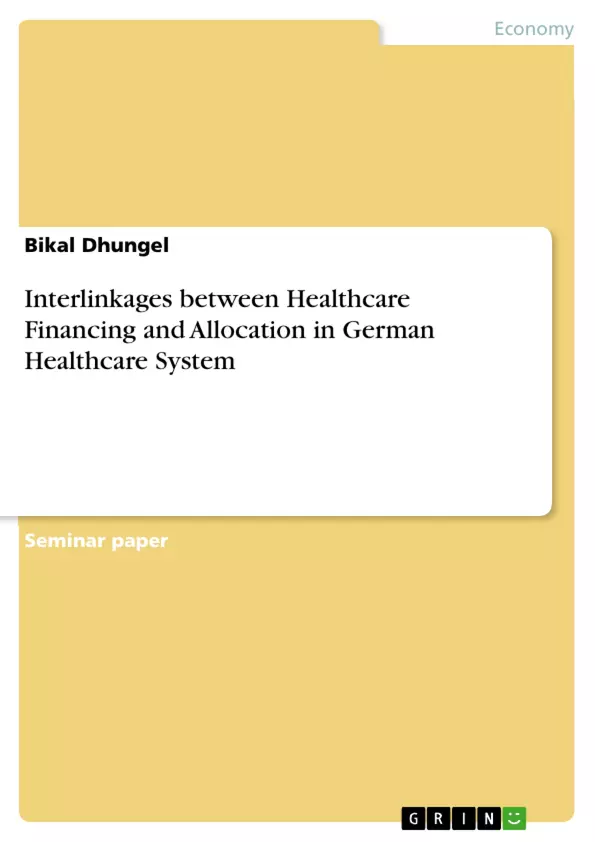Finance and Resource Allocation is one of the most important components of a healthcare system. They have direct implication on the quantity and quality of care. Therefore, how the funds are collected, how the resources are pooled and how they are allocated in health and social care is a matter of immense importance. Based on its importance on people’s life, this sector is also heavily regulated and is debated about how to make it efficient and how to generate the best outcome by being cost-effective. Resource allocation in Healthcare is an evolving process by itself because healthcare goods experience price rises, such as the medical technologies like drugs, devices, processes etc coupled with other socio-economic problems like Ageing, Climate Change etc which have direct or indirect impact on health and healthcare. Decision makers face challenge on how to spend the limited resources in the most efficient ways. Furthermore, how a healthcare system is financed will impact the decision of patients and providers by the incentives it creates. For example, in the Beveridge Model of healthcare system, present in the United Kingdom where there is no requirement to pay fee for GP visit, it can lead to over-utilisation of services whereas in the Irish system where a fee is to be paid, it can lead to under-utilisation at the first moment to save cost. From the provider’s side, it can influence gatekeeping by the GPs. Hence, healthcare financing, resource allocation and health outcomes are interlinked.
Inhaltsverzeichnis (Table of Contents)
- Introduction
- German Healthcare System
- German Health Systems and its Finances
- SHI
- PHI
Zielsetzung und Themenschwerpunkte (Objectives and Key Themes)
This essay aims to analyze and evaluate the financing and resource allocation mechanisms of the German healthcare system, using it as a case study. The essay will first provide a brief introduction to the German healthcare system, highlighting its recent developments and changes. It will then delve into the intricacies of financing and resource allocation, critically examining their strengths and weaknesses. Finally, the essay will draw conclusions based on the evaluation.
- Healthcare financing and resource allocation in the German system
- The 'Bismarck Model' and its principles
- Statutory Health Insurance (SHI) and Private Health Insurance (PHI)
- The interlinkages between financing, resource allocation, and health outcomes
- The role of incentives and market dynamics in the healthcare system
Zusammenfassung der Kapitel (Chapter Summaries)
- The introduction establishes the significance of healthcare financing and resource allocation, highlighting their impact on the quality and quantity of care provided. It further explores the complexities of resource allocation within the healthcare sector, considering factors like price increases for medical technologies and the influence of socio-economic challenges. This chapter emphasizes the interconnectedness of healthcare financing, resource allocation, and health outcomes.
- This chapter introduces the German healthcare system, tracing its origins to the late 19th century and outlining its five core principles: solidarity, benefits in kind, employer and employee burden sharing, autonomy, and plurality. It further delves into the two types of health insurance systems: Statutory Health Insurance (SHI) and Private Health Insurance (PHI). The chapter explains the criteria for choosing between these systems based on income thresholds and employment status.
- This chapter focuses on the financing of the German healthcare system, highlighting the differences between the SHI and PHI models. It elaborates on the SHI model, outlining its structure and the principle of burden sharing between employers and employees. The chapter discusses the government's role in supporting the health insurance fund and the incentives provided to healthcare providers for competition.
Schlüsselwörter (Keywords)
The key terms and concepts explored in this essay include healthcare financing, resource allocation, the Bismarck Model, Statutory Health Insurance (SHI), Private Health Insurance (PHI), solidarity, benefits in kind, burden sharing, autonomy, plurality, health outcomes, incentives, and market dynamics. These terms are central to understanding the German healthcare system and its complex interplay between financing, resource allocation, and patient care.
- Quote paper
- Bikal Dhungel (Author), 2019, Interlinkages between Healthcare Financing and Allocation in German Healthcare System, Munich, GRIN Verlag, https://www.grin.com/document/492345



